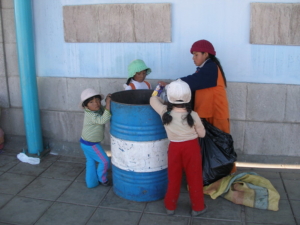Peru’s JUNTOS Program Expansion
 Peru’s JUNTOS program was launched in 2005 to lift large segments of the population from food poverty and reduce financial burdens in accessing essential resources. Since then, the program has expanded significantly, offering cash transfers and support in education and women’s welfare. By 2022, JUNTOS had developed more than six operating programs and reached more than 700,000 households in Peru. Here’s how JUNTOS has evolved, what it aims to achieve and how it continues to support poverty reduction efforts in Peru.
Peru’s JUNTOS program was launched in 2005 to lift large segments of the population from food poverty and reduce financial burdens in accessing essential resources. Since then, the program has expanded significantly, offering cash transfers and support in education and women’s welfare. By 2022, JUNTOS had developed more than six operating programs and reached more than 700,000 households in Peru. Here’s how JUNTOS has evolved, what it aims to achieve and how it continues to support poverty reduction efforts in Peru.
What Is JUNTOS?
JUNTOS supports impoverished households in most Peruvian districts, including some Indigenous Amazon communities. In 2005, roughly 40% of Peru’s population lived below the poverty line without a structured national solution. The government introduced cash transfers to improve access to nutrition and later expanded the program to cover health care and education.
JUNTOS provides funding through three pillars:
-
Restitution of fundamental rights
-
Promotion of productive development
-
Social safety net support
These pillars helped more than 85% of Peru’s population access direct cash transfers. The program targets pregnant women, vulnerable women and children ages 0 to 19.
Development of JUNTOS
JUNTOS began expanding in 2009 with its first additional initiative: the Promotion of Savings Culture (2009–2012). This success led to other programs, including Financial Education (2012), Technology Platforms for Financial Inclusion (2014–2015) and We Learn Better Together (2017–present). In 2022, JUNTOS expanded further to ensure that the majority of districts across Peru could access all available benefits.
Outcomes and Success of JUNTOS
Over two decades, Peru’s JUNTOS program has delivered results that mark significant progress in the country’s fight against poverty. In 2022, more than 703,000 households received cash transfers and essential nutrition support. Of Peru’s 1,890 districts, 1,840 gained direct access to JUNTOS services. Among the recipients were 1.5 million vulnerable women and children.
Compared to conditions in 2005, these outcomes represent major strides in reducing malnutrition, increasing school participation and improving financial literacy. Reports also highlight notable improvements in children’s development, especially cognitive growth among those exposed to the program between the ages of 0 and 4. Increased access to nutrients contributed to significant reductions in stunting among young children.
Children who accessed JUNTOS benefits early in life showed stronger developmental outcomes, suggesting that age plays a key role in the program’s long-term success. JUNTOS’ success can be attributed to its emphasis on administrative adaptability and its responsiveness to local contexts. The program’s integration with local health and education providers has ensured smoother delivery of services, while inter-agency collaboration has strengthened accountability and monitoring mechanisms. Moreover, community participation—especially involving women—has reinforced trust and boosted enrollment among marginalized groups.
Moving Forward
Peru’s JUNTOS program has supported the country’s most vulnerable populations with consistent, effective interventions. Free cash transfers improved the lives of nearly 2 million people, while expanded programs enhanced the development and well-being of children and families. JUNTOS stands as an example of how social protection programs could combat extreme poverty on a national scale.
– Joel Raymer
Joel is based in Derby, UK and focuses on Business and Politics for The Borgen Project.
Photo: Flickr
